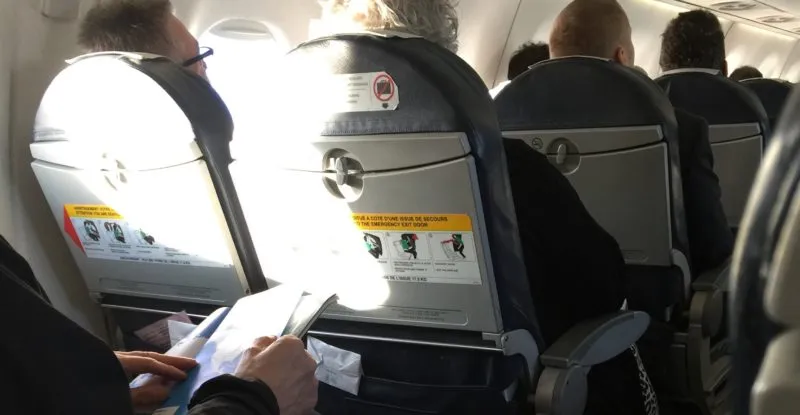With billions invested in airline branding programs, getting a return in customer satisfaction and brand reputation is critical. Checking that the performance of products and services lives up to expectations is as important as quality control in manufacturing, but more difficult to do.
Relying on passenger surveys, crew reports or interval maintenance inspections is helpful, but these results may be not paint a complete picture for program managers. Independent field inspectors can offer more detailed metrics.
As David Lipton, president and co-founder of Toronto-based Sensors Quality Management (SQM) says, the concept of “mystery shoppers” judging the product satisfaction and service of personnel at restaurants, hotels and retail outlets has a long history, though he finds the label itself outdated and prefers the more descriptive “brand experience inspectors”.
Lipton’s thousands of inspectors are helping travel brands maintain their standards and reputations. Inspectors are sent out into the field after undergoing SQM training on inspection practices as well as separate instruction on the particular requirements of the brand they will measure.
“We put together detailed inspection instructions,” Lipton says. “These instructions are available in a password-protected section of our website. They can be a combination of prompt material or photographs. Things like images of seatbacks, meal trays. They could also be written.”
To avoid bias in metrics, SQM uses checklists that can be answered objectively – “yes” or “no” or “not applicable”. “Was the safety guide in the seatback? Yes, or no,” Lipton explains. Inspectors are also encouraged to provide additional information where it might be needed to clarify their findings, but the company does not use sliding scales. “We take the grey area out of it … We don’t rank things on a scale because what is a ‘2’ to me might be an ‘8’ to you,” Lipton explains.
Importantly, SQM inspectors do not know the weight of the factors they measure in the overall score for the brand. Only SQM and the brand know that. Reports are checked by SQM in-house quality teams to ensure the completeness of information before any results are published to the client through the SQM client portal.
“We have a very robust online reporting system. Authorized users have access to individual inspections, as well as a plethora of statistics, which are typically posted online within three business days of an inspection,” Lipton says.
To protect anonymity of the programs, Lipton has asked that Runway Girl Network keep his client list anonymous, though it includes major airline brands in Europe and North America. SQM also assists global hotel chains, train companies and even bus services.
SQM metrics have proven useful to brands over the years in fine-tuning their product and addressing issues that pop up. Demand is high enough that the company is actively recruiting travelers to grow its base of inspectors. The attraction for would-be inspectors is that they can fly where they want to fly for less, in exchange for field work. For airlines, the benefit is avoiding field inspection costs and only having to cover airfare.
While inspection results have fallen under the job scope of program managers and station managers over the years, the usefulness of the metrics is now getting attention in the C-Suite, Lipton says.
“What we are finding now is that there is a trend where the CFOs and people in risk management are leading the charge, because ultimately they are the ones responsible [for evaluating the effectiveness of the investment],” Lipton says. “We also recently added an element where we handle the distribution of the data throughout the organization, acting as an outside consultant.”
While SQM’s ratings won’t result in a plaque with stars on it to post on the wall or to include in marketing campaigns, they can identify recurring component or service failures early on, allowing airlines to address these faults before they lead to public complaints or pricey write-offs.
Related Articles:
- The Nordic values behind the sensory design of Europe’s Northern airlines
- Something ventured, something gained from blue sky cabin proposals?
- Mirus’ new RWorks team highlights design’s importance
- No room for error: How the design of cabin safety equipment works
- Behind the customisation and certification cleverness of Rockwell MiQ
- Italy’s ABC International takes cabin branding to the next level
- SkyTeam, Star Alliance set customer service agendas for the year
- BA’s Abigail Comber finds her passion in customer service
- Crew drives passenger satisfaction more than any other factor: IATA
- Opinion: Airline Customer Service 2.0 requires a break down of silos











